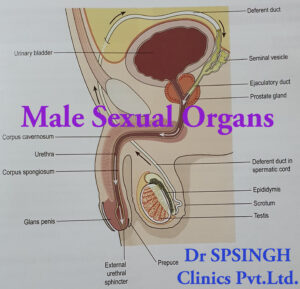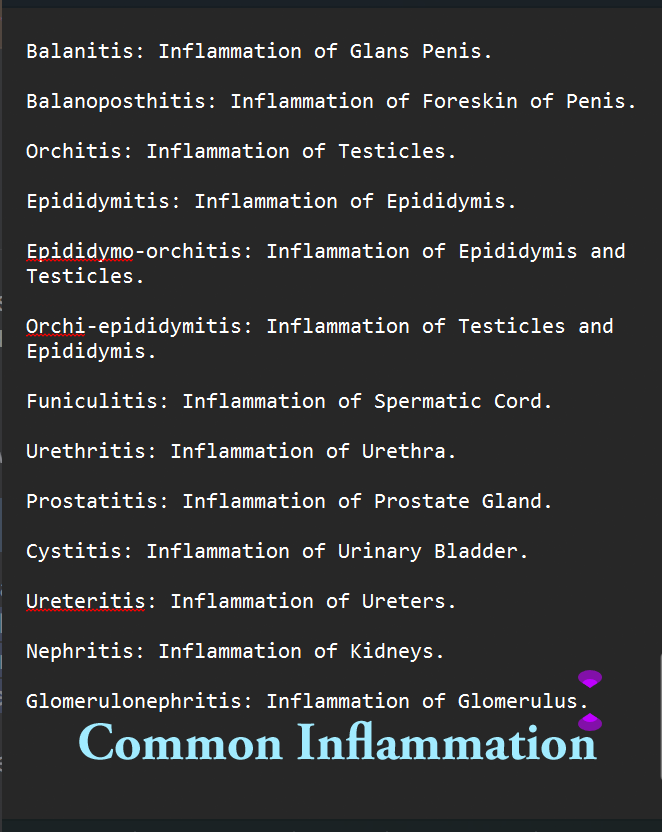What are Infections of Sexual Organs?
Infections of the sexual organs can affect both male and female, often causing discomfort, pain, or complications if untreated. They can arise from bacteria, viruses, fungi, or parasites, and many are linked to sexual activity though not all. Here’s a clear overview of common infections, their symptoms, causes, and what’s typically done about them.
Common Infections in Women
Vaginal Yeast Infection (Candidiasis)
Cause: Overgrowth of Candida (usually Candida albicans), a fungus naturally present. Triggered by antibiotics, hormonal changes, diabetes, or a weakened immune system.
Symptoms: Itching, burning, thick white discharge (like cottage cheese), redness, pain during sex or urination.
Notes: Not usually an STI, but can be passed between partners. Affects 75% of women at least once.

Bacterial Vaginosis (BV)
Cause: Imbalance of vaginal bacteria (e.g., too much Gardnerella). Linked to douching, new partners, or poor hygiene not always sexual.
Symptoms: Thin, grayish discharge with a fishy odor, itching, burning. Sometimes asymptomatic.
Notes: Most common vaginal infection in women aged 15-44. Raises STI risk if untreated.
Urinary Tract Infection (UTI)
Cause: Bacteria (usually E. coli) from the anus entering the urethra. Sex can increase risk, but it’s not an STI.
Symptoms: Burning during urination, frequent urge to pee, cloudy or bloody urine, pelvic pain.
Notes: More common in women due to shorter urethras.
Pelvic Inflammatory Disease (PID)
Cause: Untreated STIs (like chlamydia or gonorrhea) spreading to the uterus, fallopian tubes, or ovaries.
Symptoms: Lower abdominal pain, fever, unusual discharge, painful sex, irregular periods.
Notes: Can lead to infertility or chronic pain if ignored.
Common Infections in Men
Balanitis
Cause: Inflammation of the glans (penis head), often from poor hygiene, yeast (Candida), or bacteria. Common in uncircumcised men.
Symptoms: Redness, swelling, itching, soreness, smelly discharge under the foreskin, pain during sex or urination.
Notes: Not always sexual diabetes or tight foreskin (phimosis) can contribute.

Prostatitis
Cause: Bacterial infection of the prostate, sometimes from a UTI or STI spreading. Non-bacterial causes (e.g., injury) also exist.
Symptoms: Pain in the pelvis, genitals, or lower back; trouble urinating; painful ejaculation; fever (if acute).
Notes: Acute cases are sudden and severe; chronic ones linger.
Urethritis
Cause: Infection of the urethra, often from STIs (e.g., chlamydia, gonorrhea) or other bacteria.
Symptoms: Burning during urination, discharge from the penis (yellow, green, or white), irritation at the tip.
Notes: Quick treatment prevents spread to other areas.

Sexually Transmitted Infections (STIs) Affecting Both
Chlamydia
Cause: Chlamydia trachomatis bacteria via sexual contact.
Symptoms: Often silent, but can include discharge, burning during urination, or pelvic/testicular pain.
Notes: Leading cause of preventable infertility if untreated.
Gonorrhea
Cause: Neisseria gonorrhoeae bacteria from sexual activity.
Symptoms: Thick discharge (yellow/green), burning urination, sore throat (oral sex), swollen testicles or pelvic pain.
Notes: Increasingly antibiotic-resistant needs prompt care.
Genital Herpes
Cause: Herpes simplex virus (HSV-1 or HSV-2), spread by skin-to-skin contact.
Symptoms: Painful sores or blisters on genitals, itching, flu-like symptoms during outbreaks.
Notes: Lifelong; manageable but not curable.
Human Papillomavirus (HPV)
Cause: Various HPV strains via sexual contact.
Symptoms: Often none; some cause genital warts or increase cancer risk (cervix, penis, anus).
Notes: Most common STI globally; vaccine-preventable.
Trichomoniasis
Cause: Trichomonas vaginalis parasite from sexual contact.
Symptoms: Women: frothy, smelly discharge, itching, pain. Men: mild discharge, irritation. Often asymptomatic.
Notes: Easily treated but can raise HIV risk if untreated.
Diagnosis of Infections
Tests: Swabs, urine samples, blood tests, or physical exams, depending on symptoms and suspected infection.
When to Check: Persistent discomfort, unusual discharge, pain, or known exposure to an STI.
Treatment of Infections
Bacterial: Antibiotics (e.g., azithromycin for chlamydia, metronidazole for BV or trich).
Fungal: Antifungals (e.g., fluconazole or creams for yeast infections).
Viral: Antivirals (e.g., for herpes to manage outbreaks); no cure for HSV or HPV, but symptoms can be controlled.
Prevention: Condoms, good hygiene, regular screenings, vaccines (HPV, hepatitis B).
 Dr. SP Singh Clinic[/caption]
Dr. SP Singh Clinic[/caption]